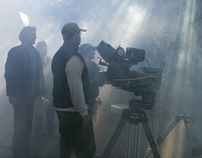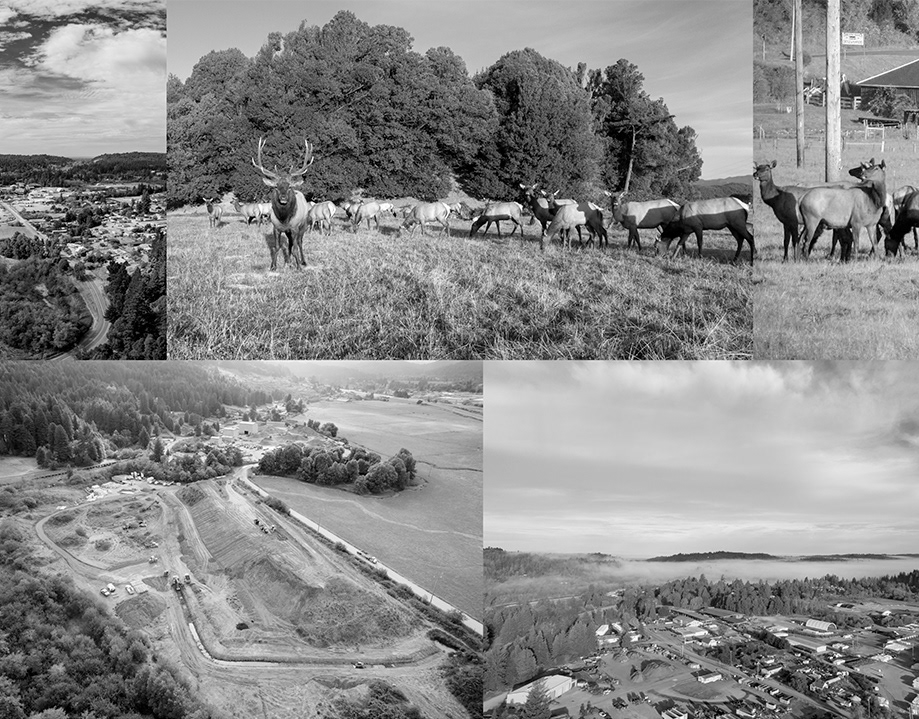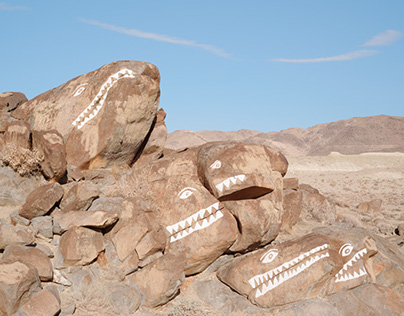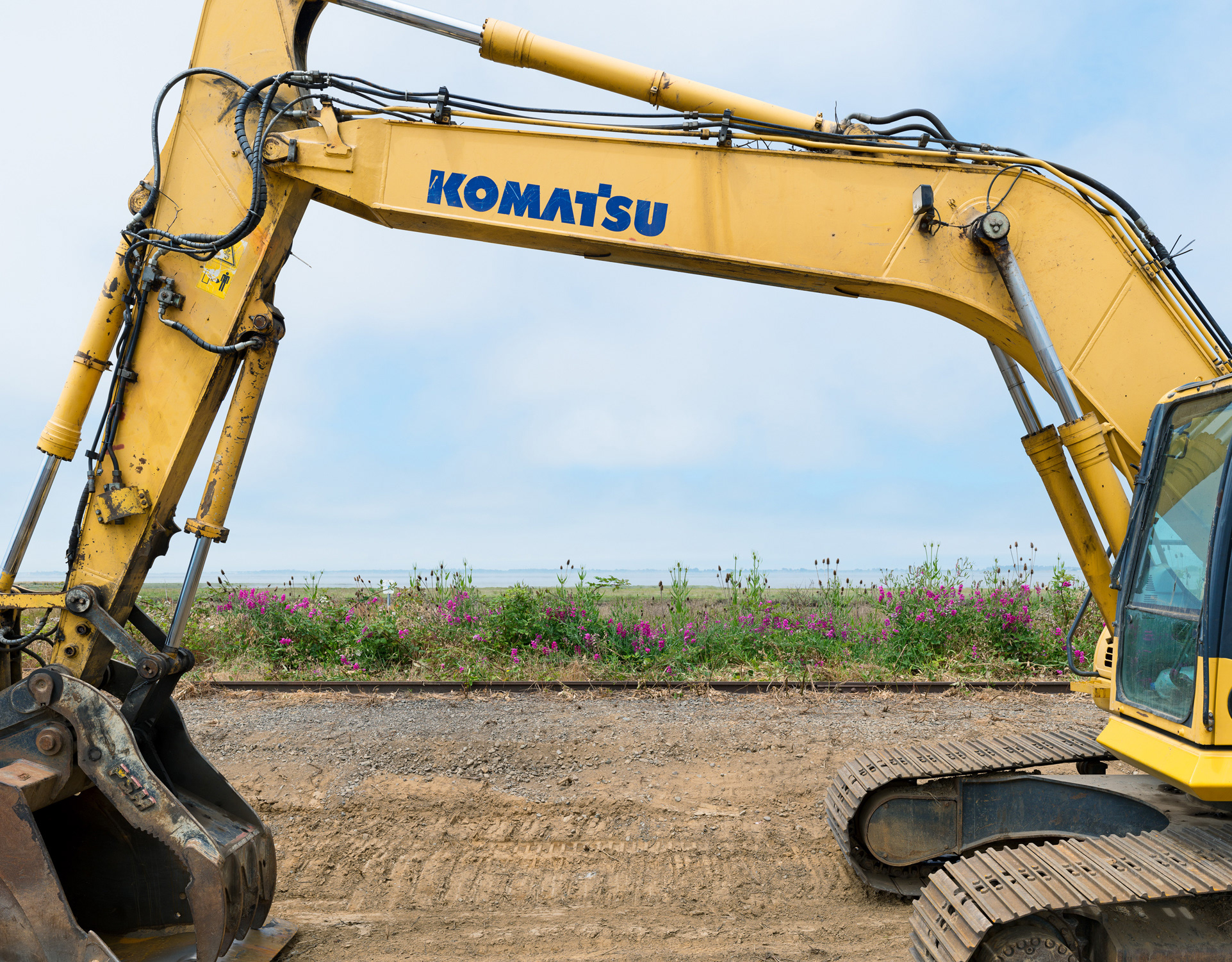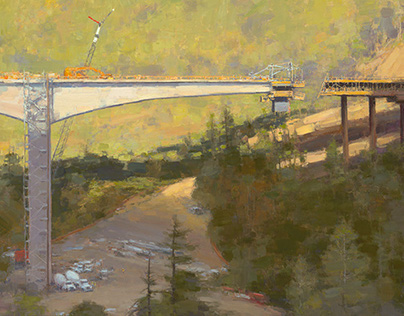2008 Show Announcement – An Arcata Ago – Photographs from Old Arcata
Introduction
A Brief History of Arcata
by Susie Van Kirk
Any effort to record the history of Arcata must begin with a respectful acknowledgment that this community sits smack-dab in Wiyot territory. That indigenous society predates the one brought by Euro-Americans by eons. In fact, those who celebrate Arcata’s 150th should recognize just how recent her history is when compared to a history that stretches back to “time immemorial.”
The business of gold, not its mining, but the transportation and merchandising of the freight needed to support that mining was the impetus for Arcata’s settlement. California’s first railroad extended from the southwest corner of the Plaza to a wharf that angled into the Bay. Never mind that the locomotive was Spanking Fury (a horse) drawing a car across the marsh on wood tracks, the Union Plank Walk, Rail Track and Wharf Company completed this first “railroad” in 1855, a mere five years after settlement. Euro-American new-comers laid out the Plaza in the spring of 1850 and christened their little community, “Union,” a name that prevailed for a decade before the present name came to be. Incorporated as Union first in 1856 and then again in 1858, the official name change occurred in 1860, when the Yurok word for Big Lagoon, Oketo, was adopted and adapted to the town’s new name—Arcata.
Sea captains, a single horse, local merchants, and mule packers conspired to move goods through the community to the mining districts on the Klamath, Trinity, and Salmon rivers and whatever gold was needed to pay for these supplies flowed back down the rivers. Big pay dirt strikes were rare, if ever, so once the initial frenzy was over, locals turned their eyes to the “gold” standing at the back door—the renowned, magnificent Redwood. Taller and bigger than anything they ever imagined, this amazing tree became the foundation of Humboldt Bay’s economic and political life for more than a century.
Arcata’s first mill appeared in the 1850s, followed by the Dolly Varden in 1872 and the Jolly Giant in 1875. The virgin forest behind Arcata was logged in the 1870s, the huge trees transported down Campbell Creek on skids still visible in the creek bed. Railroads, made first of laurel-pole tracks, moved the logs from the woods and lumber from the mills to tidewater. The little gypsy engines and the Dolbeer donkey and bull made their appearance in the 1880s, but even well into the 20th century, the work of felling trees and moving logs depended on thousands of toiling workers.
Arcata’s bottom land attracted the immediate attention of those looking for farms. Sparsely vegetated with only scattered Sitka spruce and the Mad River’s riparian forest, the Bottom was relatively clear for farming. Although now a landscape of livestock and bulbs, that first agriculture was cultivated crops—oats, barley, wheat, hay, dry peas, and potatoes. Beginning in the late 1880s, farmers concluded that a daily yield was better than a yearly yield and they turned their farms into dairies. The Arcata Creamery was built in 1892, the second two years later, and several more followed in short succession, including the Diamond Crystal Creamery.
Schools, churches, fraternal organizations, literary clubs, social events, and celebrations were all part of Arcata’s settlement and growth. The Plaza was the commercial and celebratory center of the community. William McKinley, the town’s best known character, arrived in 1906 after surviving the inferno that enveloped San Francisco after the earthquake. In 1913, Arcata out-competed Eureka to win the Humboldt Normal School. In 1914, with the coming of the railroad connecting Arcata with the outside world, Hotel Arcata was built on the Plaza’s northwest corner. The Redwood Highway followed in the 1920s, completing an automobile corridor from San Francisco to the Oregon border.
World War I and the flu epidemic were hard times for Arcata as she sent her young men off to war and watched those at home die from the dread disease. But nothing compared to World War II, when every family sent sons (some families sent four sons) and daughters to war. The community, in fact, all of Humboldt County gave more than its share to the battlefields of the South Pacific and Europe.
Following the War, construction throughout the country initiated a local logging and lumbering boom of such intensity that Arcata dubbed itself the Lumber Capital of the West, while subdivisions were built to accommodate hundreds of 20th century settlers—come to participate in the new bonanza.
The rest is modern history: the advent of the environmental movement; the shift from a lumber-dominated society to one based on education, government and services; and the rise of innovative, cottage industries. What better way to celebrate Arcata’s 150th than to view some of the photographic record of her history—logging, farming, business, celebrations, industry, shipping, and expansion.
The Wiyot people have lived in the Humboldt Bay Region for thousands of years. Beginning in the 1850s, the influx of Euro-American settlers and miners, along with the establishment of such towns as Uniontown (Arcata) drastically altered indigenous lifeways and population.
In this photo taken before 1894, this Wiyot family wears Western clothes, and uses the traditional cradle basket (perátanuwe). Cradle baskets are typically made of hazel shoots made strong from frequent burns of the plant. A strand of beads across the top forms the “life line” which should never be broken, and which was only grabbed to keep the baby’s head above water if a canoe capsized. The cradle basket keeps the newborn securely “swaddled” and comfortable. The basket was not passed on, but discarded when it was outgrown.
The “one eleven” tattoo on the woman’s chin represents the good heart and responsibility of the woman to care for the community, and often identified her as one held in high regard. As elsewhere in California, it was often the women who assumed the role of “culture broker,” providing the thread of continuity from generation to generation.
Although the Wiyot adopted the “white man’s” house and boats, Wiyot women continued to raise their children and feed their families in the old ways. And while the role of Wiyot men changed dramatically as they entered into agriculture and timber production, native women maintained traditional culture in the household. This was true even as Wiyot women married into alien Western European culture.
Information provided by Hélène Rouvier, Wiyot Cultural Director. Digital restoration completed by Michelle Hernandez, Wiyot Tribe Intern.
HSU Library Special Collections catalog number 1999.02.0213
The baskets of Northwestern California are prized the world over. This stunning collection shown in the Brizard store illustrates the artistry and skill of local native women – Wiyot, Yurok, Karuk, Hupa, Tolowa.
Baskets were painstakingly crafted of grasses, ferns, tree roots and shoots. Many were so finely woven they could hold water. Designs were created from women’s dreams; a prayer was sent with each stitch.
Included in this display are ceremonial caps, cooking baskets, burden and storage baskets, flour and gambling trays, plus dance regalia. At first glance, this image beautifully captures native art. Look carefully, for the hidden story is of a people trading family treasures for food and clothing.
Wiyot and other Indian people continue the artistry of basket making today, weaving tradition into items of beauty and function. Baskets are no longer traded for food, or sold for pennies, but are once again used in ceremony and household activities. Baskets are both the tangible and intangible connection to ancient and sacred ways of living on the North Coast.
Information provided by Hélène Rouvier, Wiyot Cultural Director. Digital restoration completed by Michelle Hernandez, Wiyot Tribe Intern.
HSU Library Special Collections catalog number 1999.02.0328
The Arcata Wharf claims California's first railroad (1855) which extended from the southwest corner of the Plaza out two miles to the Bay. The rail was first made of wood with a horse drawn car, then later becoming iron and steam powered. HSU Library Special Collections catalog number 1999.02.0379
Reaping Wheat, George Zehndner's Farm. Photograph by A. W. Ericson, circa 1893.
HSU Library Special Collections catalog number 1999.02.0368
Hayfield in Arcata Bottom. Photograph by A. W. Ericson, circa 1893.
HSU Library Special Collections catalog number 1999.02.0204
Milk Delivery. Photograph by A. W. Ericson, circa 1910.
HSU Library Special Collections catalog number 1999.02.0377
The Arcata Creamery. Photograph by A. W. Ericson, circa 1890.
HSU Library Special Collections catalog number 1999.02.0093
Diamond Crystal Creamery. Photograph by A. W. Ericson between 1901 and 1906.
HSU Library Special Collections catalog number 1999.02.0146
The Diamond Crystal Creamery was built in 1898 by John Silva and was located on the south side of 11th street just west of Janes Creek. It was first known as the Silva Creamery, until being sold in 1901. The Diamond Crystal Creamery went out of business in 1906 when creameries were consolidated. From research by Susie Van Kirk
California Central Creameries. Built in 1917. Photograph by A. W. Ericson.
HSU Library Special Collections catalog number 1999.02.0462
Devlin Tanning Company (8th & J). Photograph by A. W. Ericson. Cica 1903. Thomas Devlin arrived in Arcata in 1866 and built his Tannery in 1890. Tannic acid found in tan oak bark was used for tanning hides for leather.
HSU Library Special Collections catalog number 1999.02.0401
Ten horse team pulling redwood log. Photograph by A. W. Ericson, circa 1900.
HSU Library Special Collections catalog number 1999.02.0270
Falling a 15 foot diameter redwood, Vance Woods. Photograph by A. W. Ericson, circa 1900.
HSU Library Special Collections catalog number 1999.02.0306
Yarding timber with a Dolbeer Steam Donkey, Vance Woods. Photograph by A W Ericson, circa 1893.
HSU Library Special Collections catalog number 1999.02.0265
Gypsy locomotive, possibly Freshwater. Photograph by A. W. Ericson, circa 1900.
HSU Library Special Collections catalog number 1999.02.0311
Arcata Fair, 1919. Photographed by the Freeman Art Company.
HSU Library Special Collections catalog number: unknown
Seely and Titlow Store, H Street between 9th and 10th - currently Northtown Books. Photograph by A. W. Ericson, date unknown.
HSU Library Special Collections catalog number 1999.02.0478
Henry Bloemer, Union Steam Laundry. Photographer and date unknown.
HSU Library Special Collections catalog number 1999.07.0039
Livery Stable. Photographed by G. W. Miller, date unknown.
HSU Library Special Collections catalog number: unknown
Arcata & Mad River Railroad Engine House. Photographer unknown, circa 1893.
HSU Library Special Collections catalog number: unknown
Arcata & Mad River Railroad, tressel over Mad River. Photograph possibly by A. W. Erison. On Sunday September 13, 1896 a passenger train (A & M R R Engine No. 3) returning from Blue Lake fell through the tressel dropping forty feet to the Mad River. Of the thirty three passangers on board all but three were injured and seven died. This is the first recorded train accident with fatalities in Humboldt County. The cause of the accident was due to “decayed and unsafe conditions of the timbers.” Lawsuites were later filed on behalf of the victims against those responsable for the rail line; the Korbel brothers and the Arcata and Mad River Railroad. The courts decided in favor of the Korbels and the Railroad. information from: Steam in the Redwoods by Lynwood Carranco and Henry L. Sorensen.
HSU Library Special Collections catalog number: unknown
Southwest view (12th and H Streets). Photograph by A. W. Ericson, circa 1903.
HSU Library Special Collections catalog number 1999.02.0096
Southwest view (12th and H Streets). Photograph by A. W. Ericson, circa 1895. The first church in Humboldt County was established by the Methodists and Reverend Asa White. The Methodist Society got its start in July of 1850 when White set up his blue tent on the southeast corner of the Plaza in Arcata (then Uniontown). The Church on the corner of 12th and H streets was then built in 1866. The small building next to the church was a parsonage built in 1875. After 20 years the building was sold and moved. This and the next photograph were probably made within seven to ten years of one another; both taken from the same vantage point providing a unique opportunity to see change within a relatively short time. In the later photograph we can see the parsonage has been removed and dozens of electric lines are visible. information from: -A Bell Rang in Uniontown, The First Hundred Years of Arcata and Its Methodist Church, 1850-1950 by Gayle Karshner, 1994.
HSU Library Special Collections catalog number 1999.02.0105
The Burns building, northwest corner of the Arcata Plaza (9th and H st). Photographer unknown, circa 1890. This is the oldest building on the north side of the Plaza and was built in 1876 after fire destroyed the entire north side and portions of the east side.
HSU Library Special Collections catalog number: unknown
Arcata Plaza with Bandstand, 1901. Photographer unknown. The Plaza Improvement Committee planned and built the bandstand in 1901. Shortly after completion the fence was removed and livestock was officially banished from the village green. In 1903 the Plaza palm trees were planted and in 1906 the bandstand was removed to make way for the bronze statue of William McKinley.
HSU Library Special Collections catalog number: unknown
Hoisting McKinley. Photograph by A. W. Ericson. The bronze statue of President McKinley was commissioned by Arcata pioneer George Zehndner as a gift to the city. It was created by the San Francisco sculptor Haig Patigian for fifteen thousand dollars. The sculpture survived the devastating San Francisco earthquake and fire of April 18, 1906 and was installed on the Arcata Plaza May 2, 1906.
HSU Library Special Collections catalog number 1999.02.0105
Arcata Plaza, 4th of July. Photograph by A. W. Ericson. Circa 1901-1907.
HSU Library Special Collections catalog number 1999.02.0345
Hotel Arcata under construction. Photograph by Seely Photo, 1914 or 1915.
HSU Library Special Collections catalog number: unknown
Arcata Plaza, northeast view. Photograph by A. W. Ericson. Photo date sometime after 1921.
HSU Library Special Collections catalog number 1999.02.0383
Arcata Plaza, northwest view. Photograph by A. W. Ericson. Photo date sometime from 1906 to1907.
HSU Library Special Collections catalog number 1999.02.0125
South side of the Plaza. Seely photo, 1914. The railroad connecting Humboldt County to the rest of California was completed in 1914. Prior to the railroad, most travel to and from the County was by way of ship. Arcata had the nickname “The White City,” it was understood at the time that buildings were to be painted white. The City took pride in the way Arcata appeared to glow against the backdrop of forested hills.
HSU Library Special Collections catalog number 1999.07.2792
Work crew headed for the woods or fields? Photographer unknown, taken after 1906, note the old city hall building in the background and the city's newspaper, The Arcata Union.
HSU Library Special Collections catalog number: unknown
View southeast over the Mad River and Arcata Bottom. Photograph by Merle Shuster 10-26-1948.
HSU Library Special Collections catalog number 2001.01.1200
View southeast of Arcata, Arcata Bay in the distance. Photograph by Merle Shuster, 7-12-1947.
HSU Library Special Collections catalog number 2001.01.0662
Arcata Bottom; Spiering development in foreground and burners surrounding Arcata Union High School.
Photograph by Merle Shuster, 7-12-1947. HSU Library Special Collections catalog number 2001.01.2208
View north over Arcata Union High School. Photograph by Merle Shuster, 2-18-1963(?).
HSU Library Special Collections catalog number 2001.01.2359
Arcata Union High School. Photograph by Merle Shuster, 2-1-1947.
HSU Library Special Collections catalog number 2001.01.0242
Arcata Plaza. Photograph by Merle Shuster 12-7-1947.
HSU Library Special Collections catalog number 2001.01.0816
